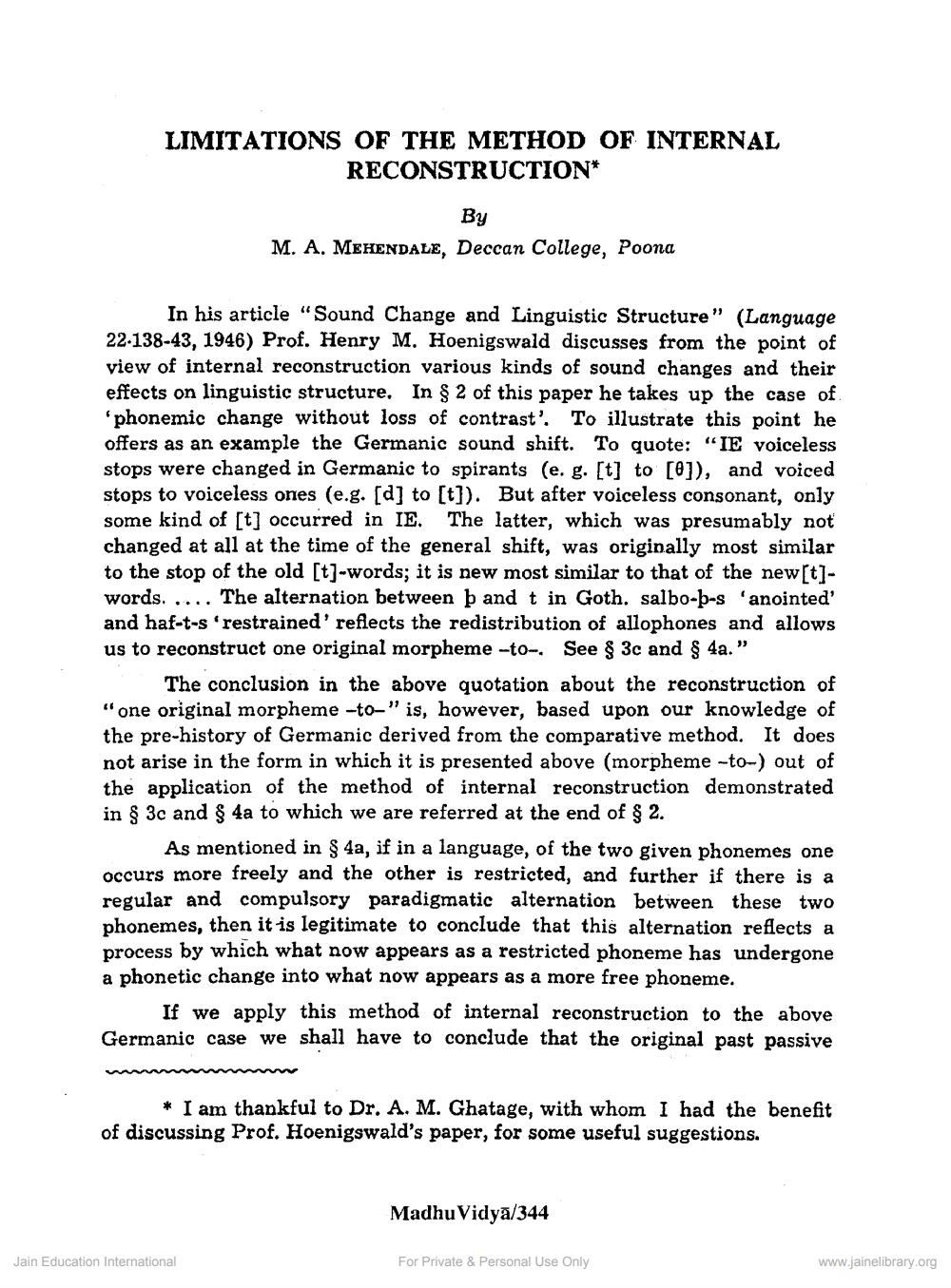________________
LIMITATIONS OF THE METHOD OF INTERNAL
RECONSTRUCTION*
Ву
M. A. MEHENDALE, Deccan College, Poona
In his article “Sound Change and Linguistic Structure" (Language 22-138-43, 1946) Prof. Henry M. Hoenigswald discusses from the point of view of internal reconstruction various kinds of sound changes and their effects on linguistic structure. In § 2 of this paper he takes up the case of 'phonemic change without loss of contrast'. To illustrate this point he offers as an example the Germanic sound shift. To quote: "IE voiceless stops were changed in Germanic to spirants (e. g. [t] to [0]), and voiced stops to voiceless ones (e.g. [d] to [t]). But after voiceless consonant, only some kind of [t] occurred in IE. The latter, which was presumably not changed at all at the time of the general shift, was originally most similar to the stop of the old [t]-words; it is new most similar to that of the new[t]words. .... The alternation between þ and t in Goth. salbo-b-s 'anointed' and haf-t-s 'restrained' reflects the redistribution of allophones and allows us to reconstruct one original morpheme-to-. See $ 3c and § 4a."
The conclusion in the above quotation about the reconstruction of "one original morpheme-to-" is, however, based upon our knowledge of the pre-history of Germanic derived from the comparative method. It does not arise in the form in which it is presented above (morpheme-to-) out of the application of the method of internal reconstruction demonstrated in g 3c and § 4a to which we are referred at the end of $ 2.
As mentioned in $ 4a, if in a language, of the two given phonemes one occurs more freely and the other is restricted, and further if there is a regular and compulsory paradigmatic alternation between these two phonemes, then it is legitimate to conclude that this alternation reflects a process by which what now appears as a restricted phoneme has undergone a phonetic change into what now appears as a more free phoneme.
If we apply this method of internal reconstruction to the above Germanic case we shall have to conclude that the original past passive
* I am thankful to Dr. A. M. Ghatage, with whom I had the benefit of discussing Prof. Hoenigswald's paper, for some useful suggestions.
Madhu Vidya/344
Jain Education International
For Private & Personal Use Only
www.jainelibrary.org




